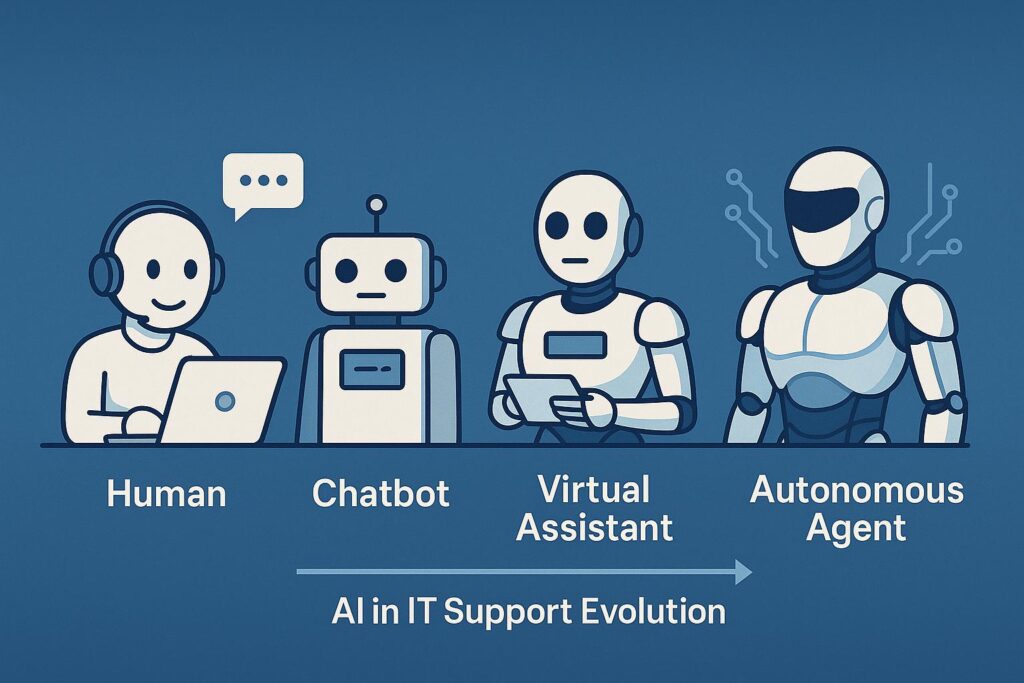
Introduction
The world of IT support has undergone a radical transformation, propelled by the relentless advancement of artificial intelligence. What began as simple, rule-based chatbots answering basic FAQs has blossomed into a new era of autonomous agents capable of reasoning, planning, and orchestrating entire support workflows. This evolution promises to revolutionize how businesses manage their IT infrastructure, offering unprecedented efficiency, proactive problem-solving, and enhanced user experiences. Let’s delve into this exciting journey, charting the course from rudimentary bots to sophisticated AI agents.
The Dawn of Chatbots: Rule-Based Assistance
The initial wave of AI in IT support brought us the chatbot. These early iterations were primarily rule-based, meaning they operated on a predefined set of rules and keywords. When a user typed a query, the chatbot would scan for matching keywords and provide a pre-written response. While helpful for addressing common inquiries like password resets or providing basic troubleshooting steps, these chatbots were limited by their rigid structure. They struggled with complex issues, nuanced language, and anything outside their programmed scope. Despite their limitations, they represented a significant step forward, freeing up human agents from repetitive tasks and providing 24/7 availability.
The Rise of Intelligent Assistants: NLP and Machine Learning
The next phase saw the integration of Natural Language Processing (NLP) and machine learning. This enabled chatbots to understand user intent more accurately, even with variations in phrasing. Machine learning algorithms allowed these intelligent assistants to learn from interactions, improving their responses over time. They could handle more complex queries, escalate issues to human agents when necessary, and even personalize interactions based on user history. This phase marked a shift towards more conversational and helpful support, offering a more seamless user experience. These assistants could analyze vast datasets of support tickets to identify common issues, predict potential problems, and proactively offer solutions.
Autonomous Agents: Reasoning, Planning, and Automation
The current frontier is the emergence of autonomous agents. These advanced AI systems go beyond simple responses and are capable of reasoning, planning, and executing actions independently. They can diagnose problems, implement solutions, and even automate entire workflows without human intervention. For example, an autonomous agent could detect a server issue, automatically troubleshoot it, and if necessary, provision a new server, all without requiring any human interaction. These agents leverage a combination of AI techniques, including machine learning, NLP, and robotic process automation (RPA). They can also integrate with various IT systems, such as monitoring tools, ticketing systems, and knowledge bases.
The Future: Proactive, Predictive, and Personalized IT Support
The future of IT support is undoubtedly shaped by autonomous agents. We can expect even more proactive and predictive support, where AI anticipates problems before they arise. Personalized experiences will become the norm, with agents tailoring their responses and solutions to individual user needs and preferences. The integration of AI with other technologies, such as augmented reality and virtual assistants, will further enhance the support experience, creating immersive and interactive solutions. Ultimately, the goal is to create a self-healing, self-managing IT environment that minimizes downtime, improves efficiency, and empowers users.
